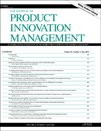 A bee researcher based in Congo has had two papers retracted, and a paper in Science corrected, for various reasons including unreliable data. The researcher, however, blames colonialism.
A bee researcher based in Congo has had two papers retracted, and a paper in Science corrected, for various reasons including unreliable data. The researcher, however, blames colonialism.
M. B. Théodore Munyuli is at the National Center for Research in Natural Sciences, CRSN-Lwiro, D.S. Bukavu, Kivu, and studies the distribution and diversity of bees. Here’s the notice from Psyche: A Journal of Entomology, for a paper on which Munyuli is the sole author: Continue reading Bee researcher in the Congo blames “injustice, segregation and colonialism” for retractions, Science correction








